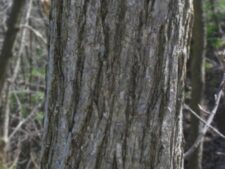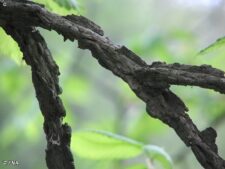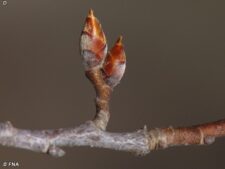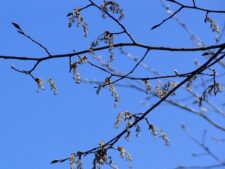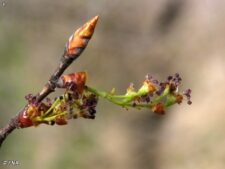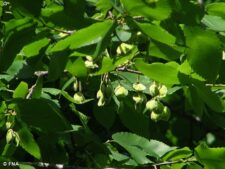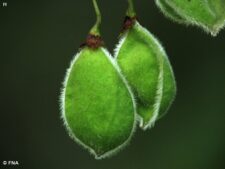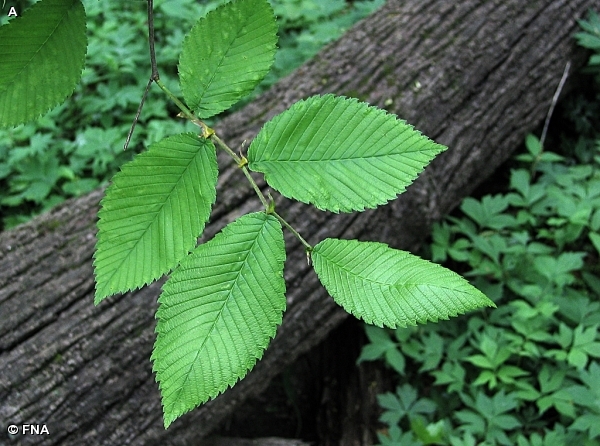
This native grows as a small-to-medium-sized tree in our area. The bark is gray with thin, vertical ridges (B). The leaves, alternate on the twigs, are up to 6 inches long and 3 inches wide. The leaves are equal at the base (A). Lower branches often have unique “corky wings” (C). The pointed flower buds have appressed, silvery hairs (D). The flowers have long stalks and appear in drooping clusters before the leaves appear (E,F). The fruit is a thick, cup-shaped samara with dense hairs on its margins (G,H). In comparison with the other three elms, the American Elm (Ulmus americana) has leaves often unequal at the base, and elliptic samaras. The Siberian Elm (Ulmus pumila) has spherical buds and smooth samara margins. The Slippery Elm (Ulmus rubra) has buds covered with a red-brown fuzz.
Grows in the moist soils of ravines with open areas, flowering in March and April. In Fontenelle Forest, uncommon in Child’s Hollow. At Neale Woods, uncommon at the History Trail overlook.
The content of NatureSearch is provided by dedicated volunteer Naturalists of Fontenelle Forest who strive to provide the most accurate information available. Contributors of the images retain their copyrights. The point of contact for this page is: Roland Barth.

